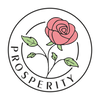A destination for Kalahari textiles and designs throughout history, India's southeast coast contributed to the thriving maritime trade in the medieval Indian subcontinent. The two historical centres of Kalamkari, in which cotton fabrics are traditionally hand-painted with visual narratives using a bamboo pen, date palm, or tamarind stick, are Srikalahasti and Machilipatnam.
What Makes Kalamkari So Special?
Natural dyes and metallic salts known as mordants, which are used to fix the dye into the cotton fibres, are a must for this handicraft because it does not employ machinery or chemicals. This art includes a precise resist technique, a lengthy 23-step process that includes cloth treatment, sketching, dyeing, printing, numerous washing procedures, and even gold or silver brocade work. This handicraft is passed over generations in Srikalahasti, Machilipatnam, and other interior regions of Andhra Pradesh.
The Srikalahasti technique involves drawing and filling in intricate motifs of religious myths and epic stories with natural dyes. The borders and pallus on sarees in this style are distinctive. Technically speaking, the Machilipatnam work is not pure penwork. These designers use reusable hand-carved blocks to print the leading lines and contours of the designs.
Influences of Various Cultures on Kalamkari Over Centuries
Because of the Mughals' support and the Golconda Sultanate's proximity, the motifs are more Persian. This design incorporates interlacing floral patterns, a Tree of Life, and birds and other animals like peacocks. They also show scenes from the kingdom's daily existence. The cultural interaction influenced Kalamkari as it attempted to satisfy the escalating Iranian demand for this material and, consequently, the European markets. The skill expanded its use beyond temple and courtly hangings to everyday textiles like household furnishings and clothing. It also adopted a variety of patterns.
Kalamkari process in both Machilipatnam and Srikalahasti styles.
Materials
- Kalam is a bamboo reed pen with a cotton cloth folded around it and entwined with cotton thread. One kalam is used for outlining, while the other is needed for coloring.
- Gaada is the traditional name for cotton fabric used for printing on fabrics.
- Buffalo milk to treat the fabric and prevent colour bleed-through.
- To maintain the stability of colours during the dying process, alum is employed as a dye fixative.
- Myrobalan bud and Myrobalan flower are two different handcrafted dyes used to intensify and make permanent the dyes.
- For the first sketches, tamarind stems are burned into charcoal and used as pencils.
- Sugar Water
Equipment used in Kalamkari
- Low wooden table with gunny sack cushions
- Paste trays made of wood
- Granite grinding stones, wooden mortar and pestles, and straightforward earthen pots to use as containers are the basic tools used in the production of black dye.
Kalamkari Making Process
Kalamkari, a centuries-old Indian art form, involves a meticulous process of hand-painting or block-printing on fabric using natural dyes. The journey begins with preparing the fabric—washing and treating it with a special mordant to enhance dye absorption. Artisans then sketch intricate designs using a tamarind pen (kalam) and fill them with vibrant, plant-based colours. The fabric undergoes multiple washes and sun-drying stages to fix the hues and bring out the final masterpiece. Each step, from drawing to dyeing, demands precision and patience, making every Kalamkari piece a unique blend of craftsmanship, tradition, and storytelling through motifs and patterns.
Kalamkari painting process
Kalamkari painting is a meticulous, time-honoured art form that involves several intricate steps. The process begins with preparing the cotton fabric by washing it with cow dung and bleach to remove impurities, ensuring it absorbs natural dyes effectively. Artists then sketch elaborate designs using tamarind twig brushes dipped in black ink derived from iron rust. The fabric undergoes multiple dyeing and washing cycles, with colours extracted from plants, roots, and minerals. Each hue is applied in a specific sequence, allowing for vibrant, long-lasting patterns. This labour-intensive method results in exquisite storytelling textiles, reflecting India’s rich cultural heritage and artistic brilliance.
Kalamkari printing process
Kalamkari printing is a meticulous handcrafting process that involves natural dyes and intricate designs. Artisans first treat the fabric with a mordant, then sketch patterns using tamarind pens. Layers of dyeing, washing, and sun-drying enhance the richness of colours. The result is a stunning textile, blending tradition with artistic precision.
you can also read : Kalamkari: A Traditional Indian Art Form
Process in Srikalahasti
Cloth preparation
To remove impurities, a cotton cloth is steeped in water overnight and then dried in the sun. The cloth is then treated with the mixture and ground with myrobalan buds, flower paste, and buffalo milk. 4 litres of buffalo milk are used to make 10 meters of fabric. The cloth is removed from the milk solution after 5 to 10 minutes, squeezed to remove the excess solution, and then allowed to dry for two hours in the sun. The cloth is given a uniform off-white colour and a silky texture by being washed three times in running water and then sun-dried.
Outlining and Sketching
Charcoal pencils created from burned tamarind branches are used for the initial sketching on the processed cloth. To trace the design, a pencil is used for detailing, and Kasim Kaaram is applied to the kalam. To create Kasim Kaaram, rusted iron filings, cane jaggery, and palm jaggery are combined. For fermentation, these substances are dissolved in water in a covered clay pot.
The iron filings are eliminated after filtering the solution for 21 days. When the artist softly squeezes the cotton ball of kalam, the dye colour hits the fabric. When this black colour reacts with fabric that has been myrobalan-treated, it becomes darker. By gently rubbing a delicate cloth against the design, extra outline colour is eliminated. The cloth is cleaned once again.
Creation of the Red Color
Alum is used to mordant the fabric to give it a red color. The darker red tones needed for painting must be obtained with the Kasim Kaaram. Additionally, alum is used just once on lighter red colours. After two days of drying, the painted alum cloth is washed under running water.
Natural dyes, such as Suruduchakka (300 gm), chavalakodi tree root powders (1 kg), and 12 kg of alum added to boiling water, are used in the boiling process. The painted cloth is submerged in the solution and boiled at a high temperature for 30 minutes. Red colours come from these tree roots. When the cloth turns red, it is taken out of the boiling solution.
The fabric is now placed in the river and repeatedly washed for three days close to the river's bank until the material is totally bleached. The coloured parts of the fabric stay the same during this procedure, while the rest of it becomes whiter. To prevent the colour from fading, buffalo milk was previously applied to the coloured cloth and left on for 10 minutes. The second treatment of buffalo milk is no longer used in modern society.
Filling Colors
- Red-coloured fabric is now used in the procedure of colour filling. previously, the required amounts were originally filled with the yellow color made from pomegranate skin.
- Next Green is produced by combining myrobalan flower, Kasim karma, and alum diluted with water.
- The indigo-leaf-based blue colour is then filled. Using kalam with tapered edges, the colour filling is carried out.
Process in Machilipatnam
The beginning steps of washing the fabric and sun drying it are the same for the Machilipatnam style as they are for the Srikalahasti style. The block printing technique, however, eliminates the need for linework because distinct blocks are utilized for each colour.
Printing of Mordants
In the first subunit, craftsmen from the community of carpenters make little blocks from teak wood to create patterns. Stretched out on the table is the fabric that will be printed. During printing, the wet undersurface stops the cloth from slipping. The mordant is then applied to a printing pad. The sponge layer is placed over the bamboo separators and is then covered with a gunny cloth.
A small amount of the mordant is absorbed by the sponge layer, and the gunny cloth serves as a blotter, allowing just the surface residue to contact the block. On the myrobalan-dipped cloth used to fill in the black and red colours, the designs' backgrounds are printed first, followed by their outlines. It is then washed again. Finally, more colours are included.
Degumming and Washing
The fabric is left to dry for two to three days after block printing. To remove the gum and any unwanted mordant and prevent the spread of the mordant's colour to any undesirable areas, it is washed with running water. It is sun-dried after washing for one hour.
Conclusion
The popularity of Kalamkari has recently increased as a result of its use of natural dyes to produce printed textiles. Prosperitymirra is your destination if you are looking out for Kalamkari Crafts. Kalamkari's elaborate and drawn-out method, together with the use of natural dyes and local instruments, not only identifies it as a unique craft but also secures its sustainability.











